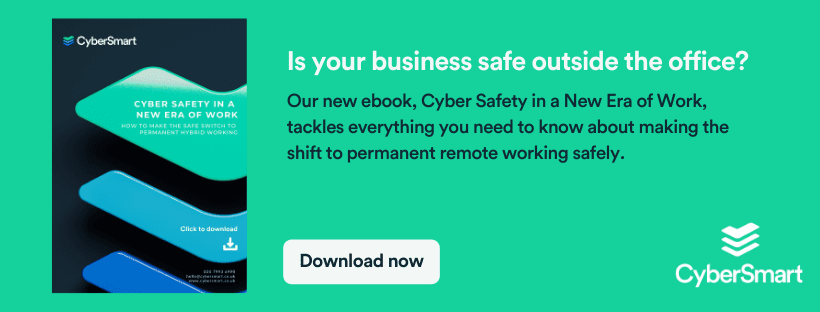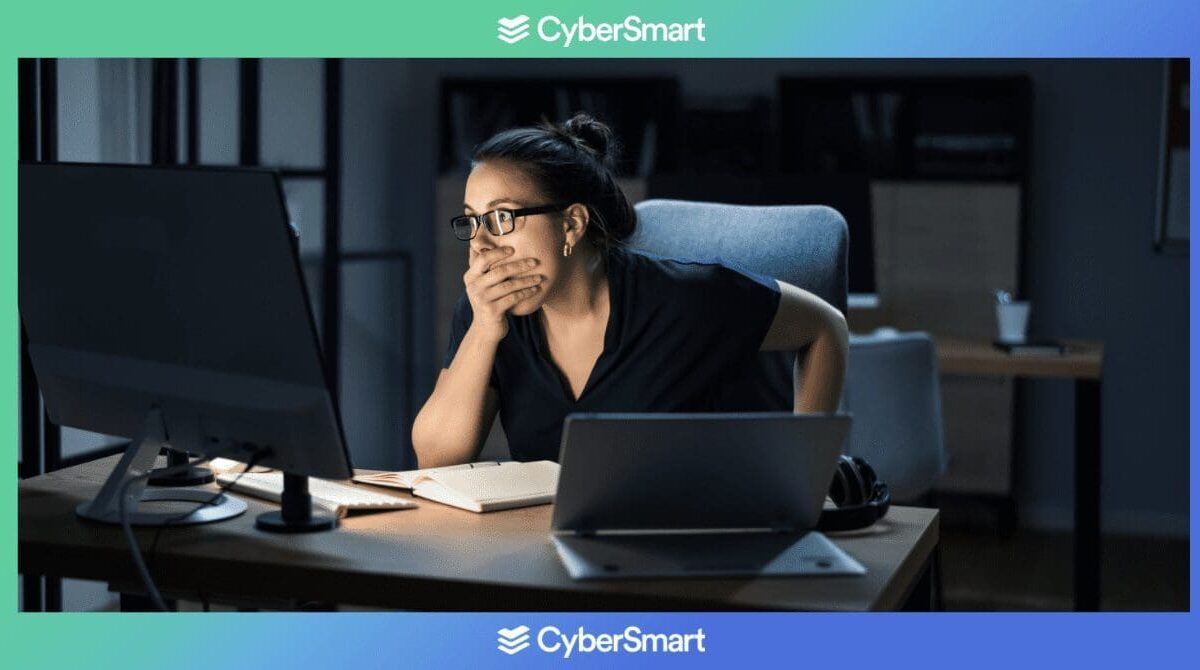Of all the cybersecurity threats we cover, ransomware is by far the most high-profile. It often seems as though barely a week passes without another story in the news about the latest blue-chip victim.
It’s not hard to see why the media devotes so much coverage to ransomware. It’s a rapidly growing threat. It usually includes a note of suspense as we all wonder whether the victim will pay the ransom. And, it’s claimed some of the biggest companies on the planet as its victims.
But beyond the media headlines, ransomware is poorly understood. How does it work? Why is it so hard to stop? And, more importantly, what can you do to protect your business?
How does ransomware work?
Most ransomware uses a special kind of encryption, called ‘asymmetric encryption’. That might sound complex, but it’s actually very simple. Like standard encryption, it uses a pair of keys to encrypt and decrypt a file. However, unlike standard encryption, the attacker is the only person with access to the key to decrypt the file. It’s this key that cybercriminal uses to hold the victim’s files for ransom.
Or, to put it in simple terms, it’s a bit like leaving the office to find your car has been clamped and a ticket attached to the windscreen with a demand to pay £250 to have it freed. Unfortunately, that’s where the similarities end. While you might be able to remove a clamp with the help of a mechanic, it’s virtually impossible to decrypt an encrypted file without a key.
And it’s for this reason that in most successful ransomware attacks the victim is forced to quietly pay up to get their files back.
How does ransomware get in?
Much like its cousin malware, ransomware comes in many forms and can enter your system in a variety of ways. However, the most common route is through email spam campaigns or through a carefully targeted attack – think March’s attack on Acer or the infamous attack on the NHS in 2017.
Once it’s in, the ransomware drops off its malicious cargo and then searches for valuable files to encrypt. ‘Valuable’ files are usually things like Word documents, spreadsheets, images and databases. Ransomware can also exploit any system or network vulnerabilities you have and spread across your organisation and into your supply chain.
Why is ransomware so hard to stop?
If it poses such a huge threat, then why does ransomware continue to grow more common and payouts keep climbing? Surely someone has come up with a way to fight it?
Unfortunately, ransomware is very tricky to counter for a few reasons.
Easy to set up
Cybercriminals no longer need to be coding wizards to launch a ransomware attack. Malware marketplaces have sprung up in the shadier corners of the internet, meaning would-be crooks can essentially order ransomware on-demand. Often all its creator will ask for in return is a share in the profits.
Most people pay up
The success of ransomware rests on the same principle as any other type of ransom. Generally, if something is valuable to someone and they risk losing it forever, they’ll pay whatever is necessary to get it back.
Cybercriminals know this, it’s what makes ransomware such a lucrative scheme.
It’s hard to track the perpetrators down
Remember the old adage ‘follow the money?’ Sadly, it’s nonsense when it comes to ransomware. Most cybercrime is paid for using cryptocurrency and planned in the darkest reaches of the internet, making it very hard to track.
There are endless targets
Wherever you are in the world, cybersecurity knowledge is low. It’s low among business leaders. It’s low among staff. And it’s low among the general public. This means potentially endless targets for cybercriminals.
As we mentioned earlier, ransomware typically enters organisations through pretty unsophisticated methods. However, ransomware doesn’t need to be sophisticated when so few of us understand what an attack looks like.
How do you protect your business?
We’ve painted a pretty bleak picture so far, but don’t despair. There’s plenty you can do to protect your business against ransomware.
Training, training, training
According to research, 95% of cybersecurity breaches begin with human error. This is especially true when it comes to ransomware, with most attacks starting through a dodgy email being opened or malicious file downloaded.
But before we rush to condemn human failings, it’s worth asking whether your people have been trained to spot threats. After all, if your employees have no idea what a ransomware attack looks like, they’re far less likely to take the right action to protect themselves or your business.
The best way to beat this is through training. Training can help your people better recognise and understand the threats they face. And, more importantly, learn how to counter them.
The kind of training you need will be highly dependent on your business and the existing knowledge of your staff. But a great place to start is by reading our blog on all things cybersecurity training.
Backup your data
As we mentioned earlier, most victims end up paying out to ransomers but there’s a very simple way to avoid this. Always backup critical files and data, preferably in the cloud or on an external hard drive. That way, if you do get attacked, you can wipe your device(s) and reinstall everything from backup.
This won’t completely remove the threat of ransomware, but it will remove the need to pay your attacker to get your files back.
Patch your software
Updating software is a hassle, we get it. There never seems to be a convenient time to reboot your device and the endless passive-aggressive reminders from your operating system can get very grating.
However, it is important, particularly when it comes to protecting yourself against ransomware. Even the best software develops vulnerabilities over time. It could be that the software was built with vulnerabilities that weren’t anticipated at the time or it might be that a new cyber threat has emerged. Whatever the reason, software developers get around the problem by releasing security patches.
These updates fix the ‘holes’ in your software that can be exploited by ransomware. Without them, you risk giving cybercriminals a back door into your systems and data.
But the good news is all you have to do is regularly update any software or tools you use. It shouldn’t take more than a few minutes each week and it’s by far the most effective (and simple) way to protect yourself.
Read more about the importance of patching here.
Stick to secure networks
Whether it’s at your favourite local coffee spot or on the train to that important client meeting, using public Wi-Fi networks is a bad idea. Most public networks have poor or non-existent security and are the perfect place for cybercriminals to snoop on your internet usage and launch attacks.
If you need to connect to a public network for any reason, use a Virtual Private Network (VPN). A VPN allows you to connect to business systems securely and browse the internet safely, wherever you are. For everything you need to know about VPNs, check out our blog on the subject.
Put security policies in place
It’s one thing to improve staff awareness of the threats posed by ransomware, quite another to ensure everyone is following security best practices. This is where a clear, easy-to-understand cybersecurity policy can work wonders.
A well-crafted policy will help your people understand what they should and shouldn’t do and help them make the right decisions when faced with threats like ransomware.
Stay informed
Last, try and keep an eye on the latest ransomware threats. To be clear, we’re not suggesting you become a cybersecurity expert overnight (unless you want to). However, having even a basic knowledge of what ransomware looks like can help prevent the worst.
Is your business working remotely or considering making the switch? Don’t do anything without reading our guide to cybersecurity in a new era of work.

